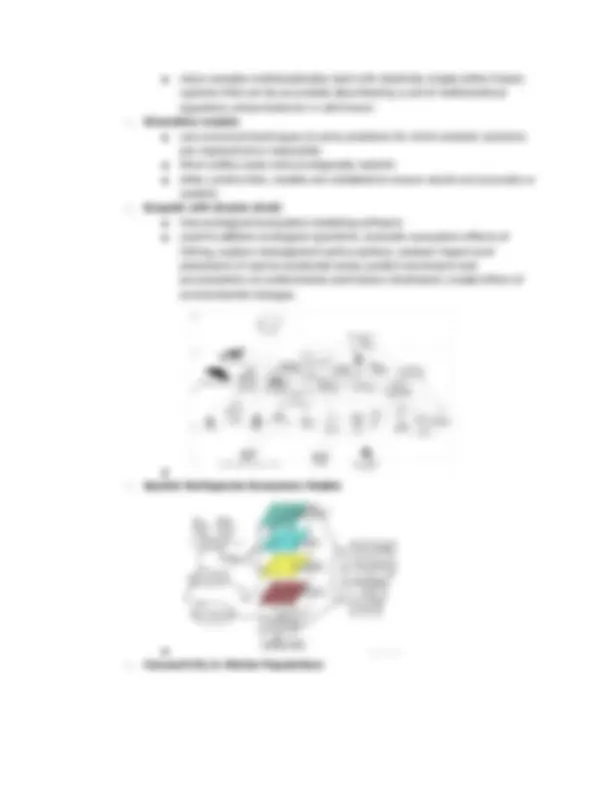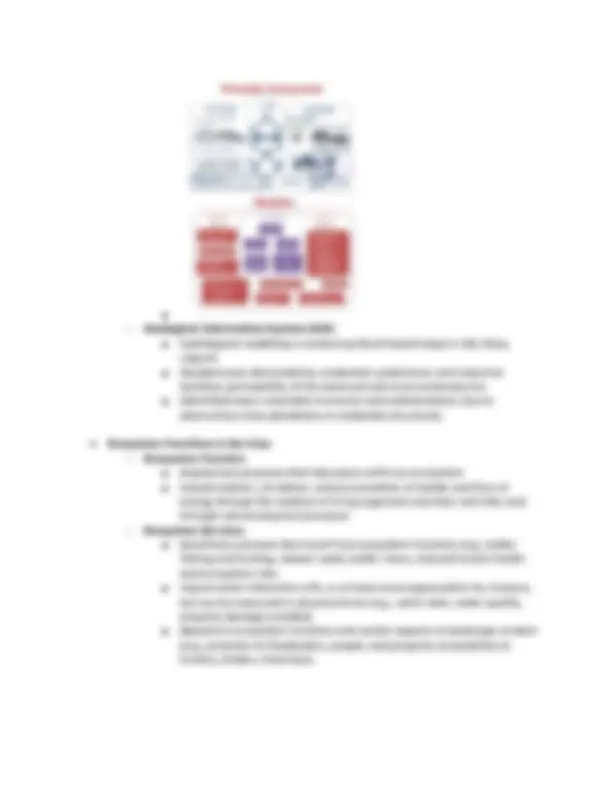





Study with the several resources on Docsity

Earn points by helping other students or get them with a premium plan


Prepare for your exams
Study with the several resources on Docsity

Earn points to download
Earn points by helping other students or get them with a premium plan
Community
Ask the community for help and clear up your study doubts
Discover the best universities in your country according to Docsity users
Free resources
Download our free guides on studying techniques, anxiety management strategies, and thesis advice from Docsity tutors
Systems Ecology in BIO 150 Ecology Lecture
Typology: Study notes
1 / 6

This page cannot be seen from the preview
Don't miss anything!




Howard T. Odum - father of ecosystems ecology The 4 Laws of Ecology ( Barry Commoner from book entitled The Closing Circle )
1. Everything is connected to everything else ● There is one ecosphere for all living organisms. What a�ects one a�ects all. 2. Everything must go somewhere ● There is no waste in nature. Any waste produced in one ecological process is recycled in another. 3. Nature knows best ● “The absence of a particular substance in nature is often a sign that it is incompatible with the chemistry of life.” 4. There is no such thing as a free lunch ● There are consequences for every action. ● System ○ organization that functions in a particular way ○ set of interacting interdependent entities forming an integrated whole ○ comprised of clearly defined elements, links, and boundaries ○ Elements or structures; interconnections or interactions; function or purpose ● Ecological units are also systems. ○ example: ecosystem ecology (interactions of populations with one another and with their physical environs) ● Ecosystem as a unit is a complex level of organization; must be studied as a whole ● Tools and processes in systems ecology are di�erent from conventional phases of ecology because of the complexity of the total ecosystem as compared with a segment of it ● Systems approach ○ repeated cycles of data collection, analysis, computational modelling and prediction, which is usually followed by further cycles wherein the model’s predictions are tested and the model continuously refined ● Systems Ecology ○ Study of the development, dynamics, and disruption of ecosystems ○ Uses mathematical modelling, computation; based on systems theory ○ interdisciplinary field of ecology; subset of Earth system science; uses holistic approach in studying ecosystems ○ Basis of the complexity of ecosystems and their emergent properties ○ Ecology + mathematical sciences + computational sciences + systems theory ○ 2 phases: ■ theoretical ■ analytical, experimental
● Ways of experimenting with ecosystems ○ Conventional process of formulating hypotheses, designing and conducting experiments and analysis and interpretation of results ○ Abstraction of the system into a model, application of mathematical argument, and interpretation of mathematical conclusions ○ Experiment = costly; mathematical modeling/experimentation alternative ○ To ensure model validity: mathematical system must be translations of valid ○ properties of the real world system ○ Application of mathematical argument gives rise to theorems which can be interpreted to give new insight ○ The value of these conclusions should be verified by experimentation ■ Conceptual requirements:
health, agriculture, and wildlife conservation ○ Analytic models
○ Agent Based Modeling ■ individual-based models (IBMs) ■ bottom-up; analyze a system by its individual agents that interact with each other. ■ ability to understand macro phenomena emerging from micro-scale behavior ■ ○ WaNuLCAS ■ Water, Nutrient, and Light Capture in Agroforestry Systems ■ Represent tree-soil-crop interactions in a wide range of agroforestry systems where trees and crops overlap in space and/or time
○ Geological Information System (GIS) ■ hydrological modelling in producing flood hazard maps in Sta. Rosa, Laguna ■ flooded areas dominated by residential subdivisions and industrial facilities; permeability of the land and soils to be extremely low ■ Identified areas vulnerable to erosion and sedimentation; due to obstructions (tree plantations & residential structures) ● Ecosystem Functions & Services ○ Ecosystem Function ■ biophysical processes that take place within an ecosystem ■ transformation, circulation, and accumulation of matter and flow of energy through the medium of living organisms and their activities and through natural physical processes ○ Ecosystem Services ■ beneficial outcomes that result from ecosystem functions (e.g., better fishing and hunting, cleaner water, better views, reduced human health and ecosystem risks ■ require some interaction with, or at least some appreciation by, humans, but can be measured in physical terms (e.g., catch rates, water quality, property damage avoided). ■ depend on ecosystem functions and certain aspects of landscape context (e.g., proximity to floodwaters, people, and property; accessibility to hunters, birders, fishermen)